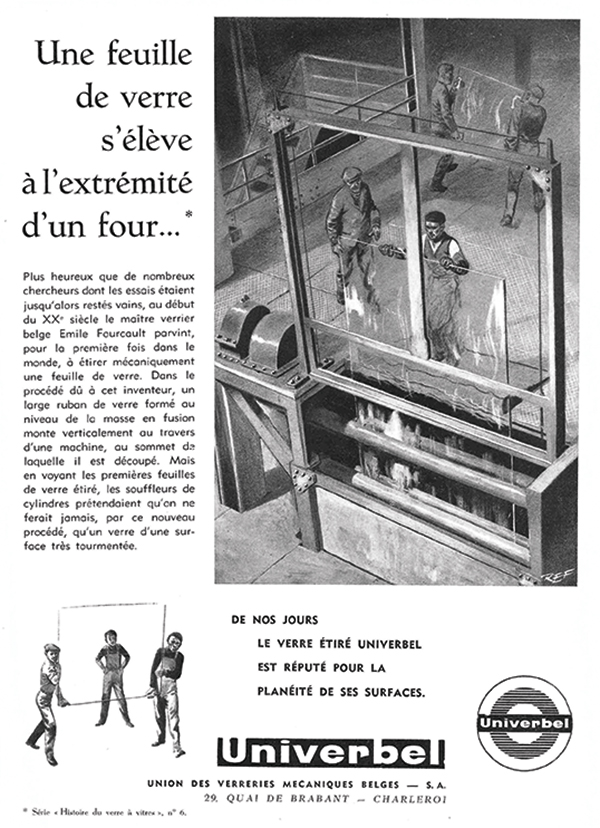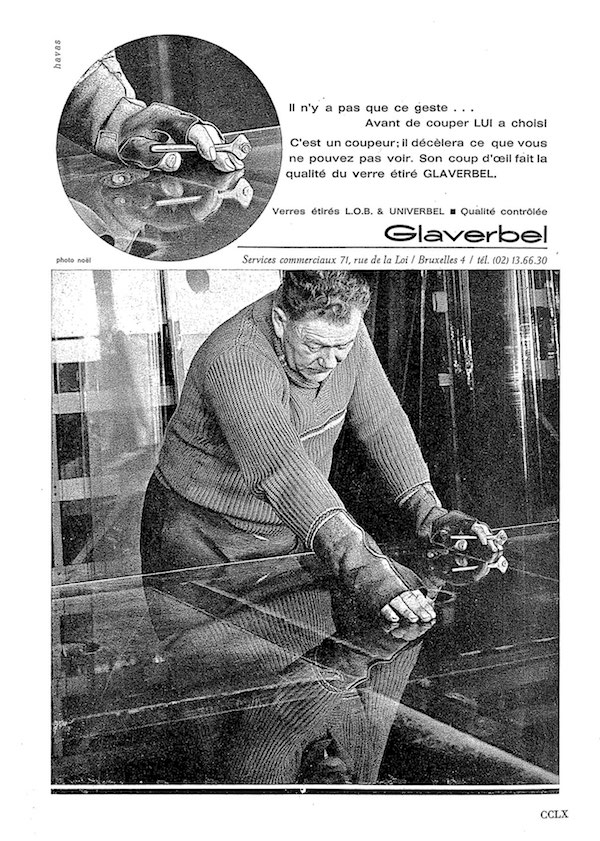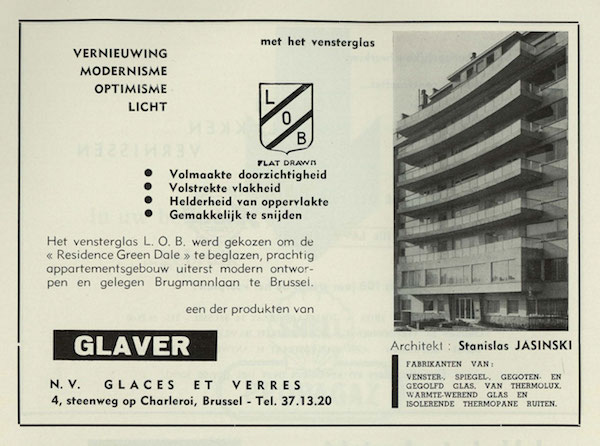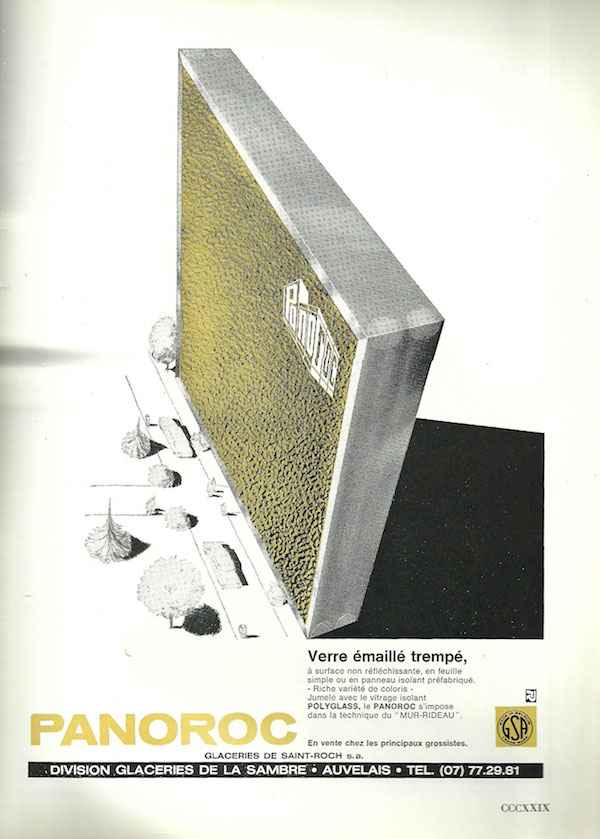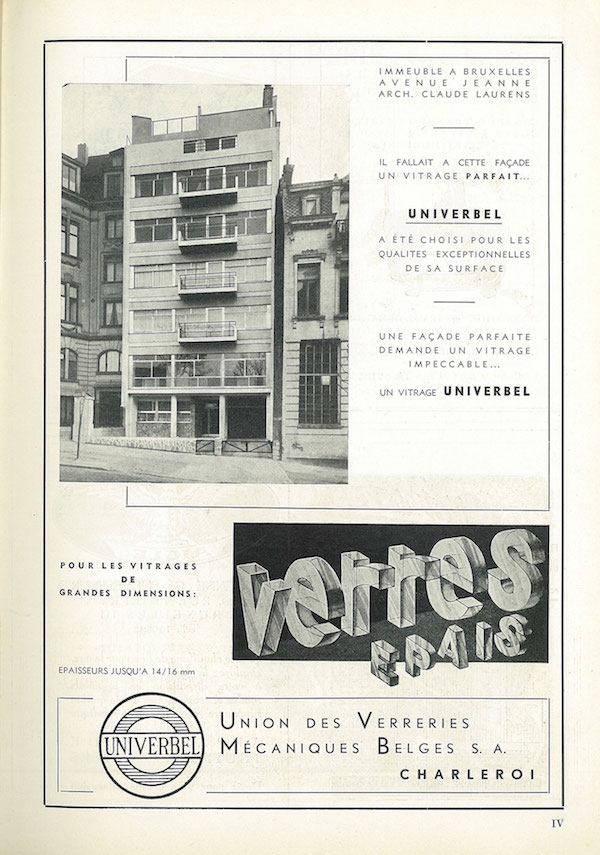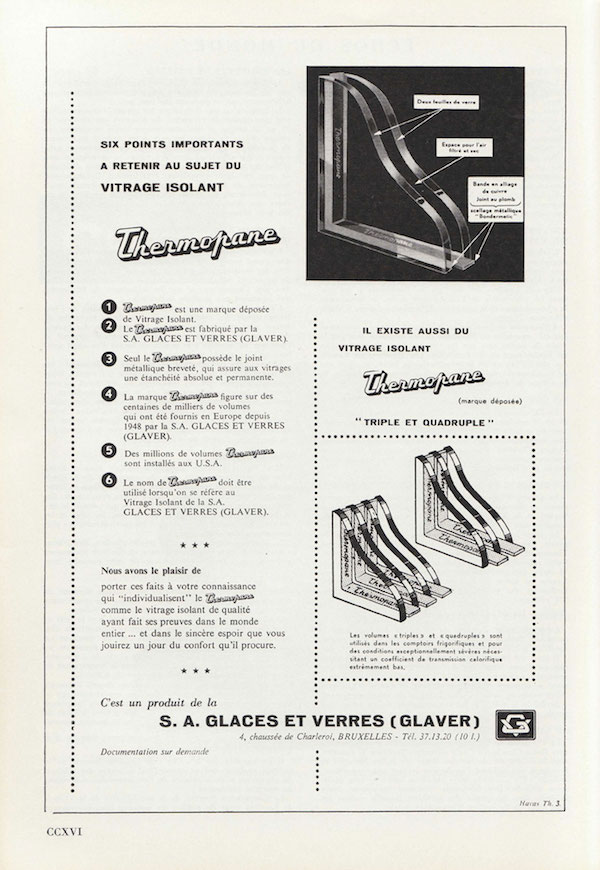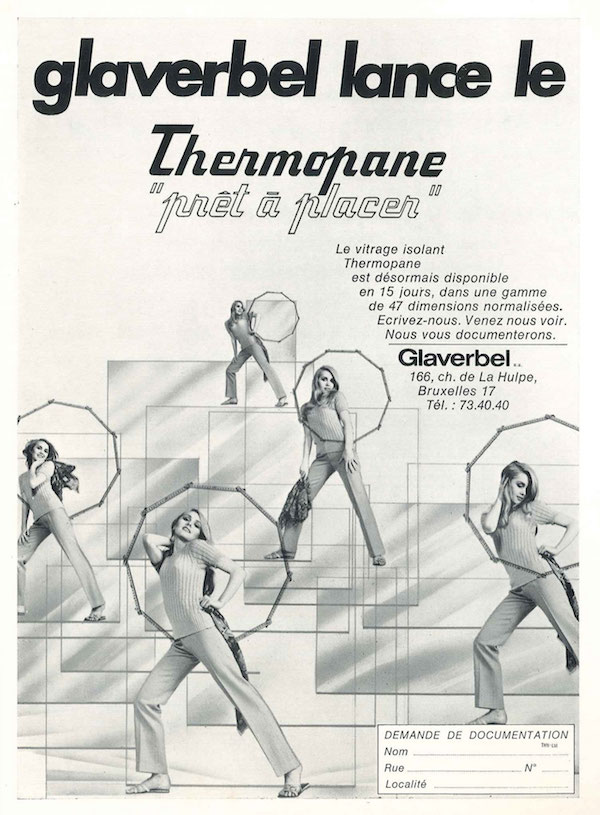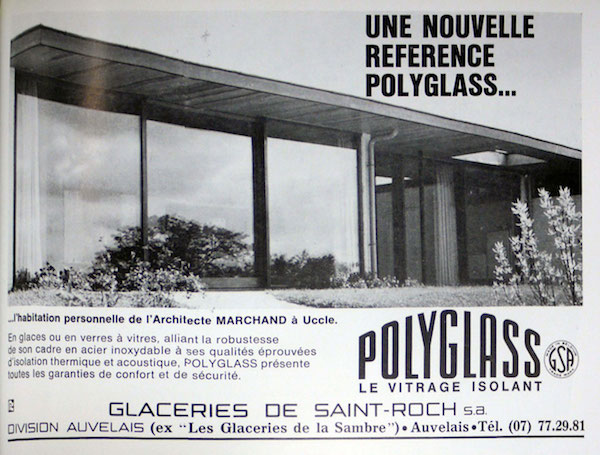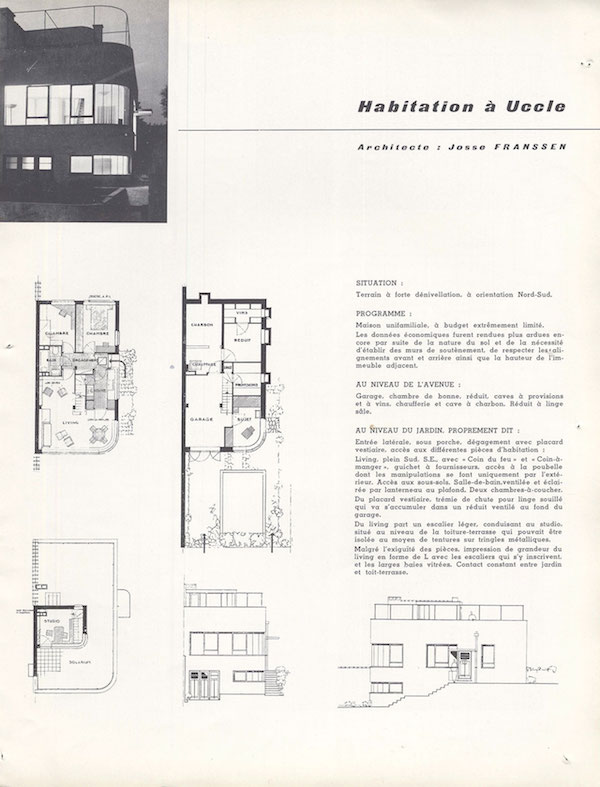types of glass
In addition to (regular) blown, cast, drawn, and float glass, many other types of glass have been developed, based on particular production techniques or combing sheets of glass with another material. Examples include double glazing, insulating glass, safety glass, coloured and opaque glass, and cast figured glass. In order to categorize these different products, the Belgian Building Research Institute (BBRI) set up a working group ‘Glass and mirror glass’ in the early 1960s. The working group prepared Technical Information Note 25, on the ‘Terminology of the main glass products used in the building industry’. It defined eight main categories: mirror glass, window glass, cast glass, blown glass, glass blocks, special types of sheet glass, processed glass, and glass treatments. Each category included a number of sub-categories. For example, coloured glass, opaque glass, and athermic glass were special types of sheet glass; safety glass and insulating glass were examples of processed glass. Not every type of glass was commonly used in residential buildings, for instance blown glass and certain types of cast glass like ‘cathedral glass’.
mirror glass and window glass
Flat sheets of polished cast mirror glass and drawn window glass were the most common types of glass used in house building, until the rise of double glazing in the post-war period. Contrary to what the terminology implies, both are transparent (although rough mirror glass and grounded mirror glass are translucent). The difference between them is that window glass is polished by fire, while mirror glass is polished mechanically. Mirror glass existed in thicknesses between 2 and 40 mm (commonly between 3.5 and 8 mm), while the thickness of window glass could vary between 0.6 and 20 mm. The maximum length and width of sheets was related to the thickness (for instance, the maximum width of an 8 mm sheet of mirror glass was 3.30 m), and transportation or placement possibilities. Theoretically, lengths up to 6 m were possible, yet difficult to achieve in practice.
cast glass
Cast glass was still in use in the post-war period for particular decorative applications. By casting molten glass paste onto a table with a rough or textured surface, the resulting glass was imprinted with a pattern in relief. Because of the imprint, this cast glass – called patterned glass or figured glass – lost transparency but remained translucent and still transmitted almost as much light as transparent glass. Another way to get the relief printing was by pressing the glass between two rollers onto which a pattern had been imprinted. A large variety of patterns or figures were used, from hammered, crenated, and ribbed to custom designs.
glass blocks
Glass was also made in shapes other than flat, for example in corrugated sheets and blocks. Glass blocks were produced in various shapes (mostly square or round), sizes (e.g. square blocks from 5 by 5 cm to 30 by 30 cm), colours and types (solid or hollow). Manufacturers claimed these blocks were fire resistant and easy to clean. As for the thermal properties, their insulating capacity was two or three times that of sheet glass, while still transmitting approximately 80% of the light. The combination of glass blocks and in situ concrete (called translucent concrete) was still very popular in the post-war period. Belgian firms such as V. Ackermans, Wenmaekers & Cie, Aug. Nyssens & Cie, Alfred Lenfranc, and many others carried out this technique.
special types of sheet glass
By mixing specific ingredients into glass during the manufacturing process, special types of mirror glass, window glass, or cast glass could be created, e.g. coloured glass, opaque glass, opalescent glass, athermic glass, and (anti-)actinic glass (blocking or transmitting UV radiation). For instance, metal oxides could be added in small or large quantities to create coloured glass, translucent or opaque glass. Athermic glass was sheet glass of which the chemical composition was adjusted to absorb sunrays. Athermic glass, which had a very light and soft blue, green or grey tint, was especially popular for glazing in office buildings, libraries, and working spaces.
processed glass
Three main types of processed glass can be distinguished: safety glass, double glazing, and insulation glass.
Production of safety glass began at the beginning of the 20th century when multiple sheets of glass were combined using a celluloid foil, pvb-film or resin, to create laminated safety glass. Although this involved two panes of glass, multi-layered and laminated glass are not double glazing – this term applies only to two (or more) panes of glass with a layer of dry air or gas between them.
Tempered glass, invented in 1929 by the French glass company Saint-Gobain, was a specific type of safety glass. It was made by heating a sheet of glass up to 600° C and cooling it down very quickly, which made the glass up to five times more resistant to thermal and mechanical shocks, pressure, bending, torsion, and buckling. Tempered glass was thus not easy to break, and when it broke, it did so in innumerable, very little pieces with no sharp edges.
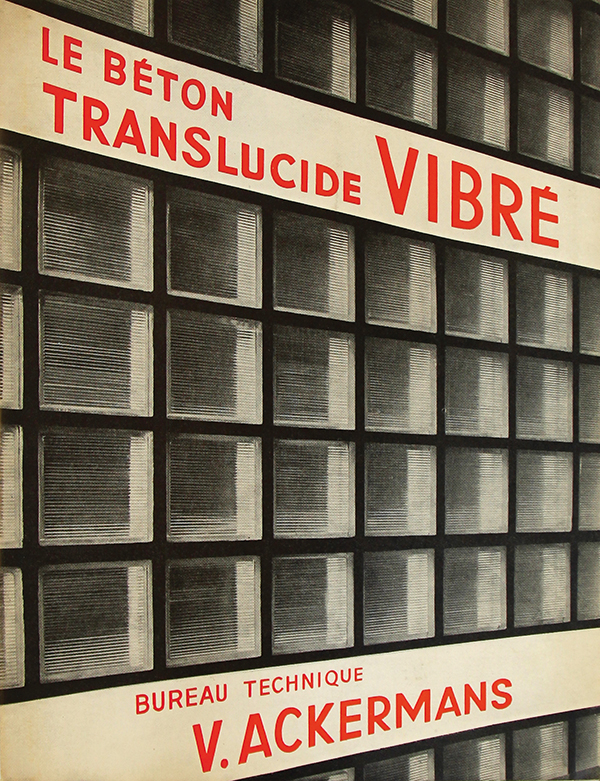
Double glazing was one of the most common glass products used in housing construction in the post-war period. It was first commercially produced by the Libbey-Owens-Ford glass company in the early 1940s, under the brand name Thermopane. In Belgium, the first double glazing was produced in 1947; from the 1950s onwards it became commonly available. Double glazing became very popular because of its insulation capacities, both thermal and acoustic. It reduced heat loss by 50% over single glazing, and because of the two-stage transition from cold to warm, prevented condensation. Double glazing also enhanced the acoustic properties of windows: while single glass retained 20 decibels, double glazing stopped 40 decibels. As for the composition of double glazing, the glass panes were usually between 3 and 10 mm thick, while the layer of air could be almost 20 mm. The theoretically largest size for double glazing in the 1960s was 6 m by 3 m. The separation between the two panes initially was assured by a lead or copper band and soldering. From the 1970s onwards, strips of aluminium were used to maintain the space between the two panes. Double glazing needed to be absolutely airtight: moisture between the panes condensed and made the windows translucent instead of transparent. There was no way to repair double glazing once condensation had formed between the panes, other than replacing it. Within the category of double glazing, new technologies and high performance glazing germinated in the post-war period. For instance, already in the mid-1950s, it was possible to use tempered glass instead of ordinary window glass, mirror glass, or cast glass for Thermopane glazing. Three, or even four or five, panes of glass were used by Glaver to create triple, quadruple and quintuple glazing (from the early 1950s, the second half of the 1950s, and the late 1950s onwards respectively).
Insulating glass, which also enhances the thermal insulating capacities, included a layer of glass fibres between two panes of glass, hermetically sealed at the edges. However, the fibre layer made the glass translucent instead of transparent.
glass treatments
The last category in the BBRI’s Technical Information Note consisted of various ways to treat glass, either industrially or by craftsmen. For instance, by applying a very thin coat of metal to one side of the glass infrared rays were reflected. Other examples were non-reflecting glass, glass that conducted electricity, engraved glass, frosted glass, and enamelled glass. The latter was a specific type of opaque glass: a layer of coloured enamel was applied to the glass and thermally treated to assure a complete vitrification. This glass resisted mechanical and thermal shocks, and atmospheric agents, very well; and needed little maintenance. For these reasons, it was ideal for sandwich panels in curtain walls or parapets. And as it enabled lively colour schemes, enamelled glass fitted perfectly with the optimistic, modernistic architectural style of the 1950s.





